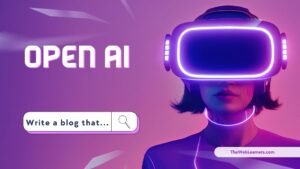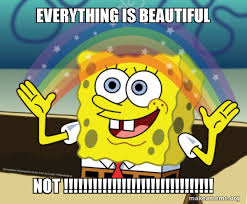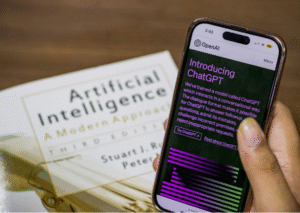
GPT Content Creation
What if Hollywood’s golden age, but instead of star-studded casts, we have AI taking centre stage? The year is 2098. An AI actor delivers lines with perfect precision, but where is that human spark? Sounds familiar? This is a bit like what we see with OpenAI’s latest GPT model in the content creation world. While it can generate content at lightning speed and with impressive accuracy, it sometimes lacks that personal touch. So, tighten your seatbelt for Lights, Camera, and GPT! In this blog, learn how OpenAI’s Latest Model is Redefining Content Creation. Calling all the content writers to know where it still has room for improvement.

Spotlight on GPT’s Triumphs in Content Creation
In this section, we will find out which segments of content creation get help from OpenAI’s model. Maybe you are wondering about which OpenAI’s Latest Model we are talking about. Well, think about GPT-4 or beyond. Don’t worry—each new version only reflects better personalisation and accuracy than the last. To understand the intent of this blog, the following subsections will be a great help. Take a look here.
A. Social Media Magic: GPT’s Role in Crafting Engaging Posts
In the social media world, GPT acts as your personal content magician. From creating eye-catching Instagram captions to writing engaging tweets and LinkedIn updates, it is thriving everywhere. These models help you maintain a consistent voice and keep up with the relentless demand for fresh content. Imagine having an AI that not only keeps up with trends but helps set them. That’s what OpenAI Models do for you. GPT’s adaptability guarantees your social media presence is always on point.
B. The Art of Outline and Summary: GPT as Your Editor
Additionally, facing a blank page is no longer a problem with GPT in your corner. Your long-form content has to be SE- optimised and a well-structured outline is key to that. Don’t you have time to search 20 trending blogs and collect the outlines for your blog? GPT’s got you covered. It simplifies the content creation process by generating structured outlines and summarising lengthy texts. It means you have to focus on the “Quality” of the content. That is my friend, the most crucial area to rank your blog on Google’s 1st page.
C. Personalised Content Creation With Customised Search Solutions
Let’s be real—filtering through endless search results can be exhausting, especially for writers.GPT’s personalised search capabilities recast your content discovery experience. By focusing on your specific needs and preferences, GPT delivers targeted results that align with your interests. This means you get exactly the content you’re looking for without the hassle of irrelevant search results. Amazing, isn’t it?
Read Also: AI Tool Hunt: This GPT Tool Will End Your Search for the Best AI Fit
Areas Where GPT Still Needs a Bit of Improvement
 We know you are already impressed by GPT’s functionality in content creation. But the bad news is that this is not all. GPt still needs improvement, as you already know if you used one. So, let’s quickly see what those are.
We know you are already impressed by GPT’s functionality in content creation. But the bad news is that this is not all. GPt still needs improvement, as you already know if you used one. So, let’s quickly see what those are.
A. GPT Sometimes Misses the Human Touch Element
Can we really blame GPT for this? While GPT excels in many areas, it sometimes struggles with the human touch. Its content can come across as mechanical, lacking the depth, emotion, and nuance that are crucial in creative writing or storytelling. Most importantly, this dysfunctionality is highly prominent in creative writing or storytelling. Because in this genre of writing, personality and emotional connection are key.
B. The Challenge of Fairness in the Content Creation
Bias in AI is a significant concern, and GPT is no exception. Since it learns from vast amounts of data, it can replicate biases present in that data. This can result in unintentional stereotypical content. It’s crucial to be aware of this potential bias. You can even see by yourself that GPT-generated content has a disclaimer ( ChatGPT can make mistakes).
C. GPT Fails To Deliver Top-Notch Content(Sometimes)
Lastly, we want to say that not all GPT-generated content is flawless. Occasionally, it can produce low-quality outputs that require further editing. This might include awkward phrasing or factual inaccuracies. For industries where accuracy is critical, such as healthcare or finance, it’s essential to review and refine GPT’s content to maintain high standards.
Also read: Free AI Tools: The Ultimate Uncommon Tool List to Boost Creativity
Can AI Replace Human Writers?
The short answer? Not entirely. While AI-powered models like OpenAI’s latest GPT are transforming content creation, they still lack emotional intelligence, critical thinking, and creative depth, which remain essential in writing.
Where AI Excels
- Speed and Efficiency – AI can generate content in seconds, making it invaluable for bulk writing.
- SE-Optimisation – AI tools can naturally integrate keywords and enhance readability.
- Data Processing – AI can analyse vast amounts of information and summarise key points quickly.
- Content Structuring – AI can draft outlines, suggest headings, and format blogs for improved clarity.
Where Humans Have the Edge
- Emotional Depth and Storytelling – AI-generated content often lacks the human touch needed for compelling narratives and brand storytelling.
- Originality and Creativity – AI relies on pre-existing data patterns, which can make the content feel generic or uninspired.
- Context and Nuance – AI can struggle with sarcasm, humour, or cultural references that human writers naturally grasp.
- Ethical Judgment – AI-generated content may unintentionally reflect biases or inaccuracies.
While AI is an impressive tool that enhances productivity, it cannot replace the creativity, critical thought, and emotional depth that define great writing. Instead of seeing AI as a replacement, it should be viewed as a tool that supports and refines human creativity.
So, being a content creator, you shouldn’t worry. Here’s why:
What field experts say about the replacement of writers with AI:
“Artificial intelligence can write, but it cannot create—true creativity requires a soul, something AI will never possess.” – Joanna Penn, author & AI in publishing expert
“A machine can turn words into sentences, but only a writer can turn sentences into stories that move people.” – Neil Gaiman
“Writers should not fear AI replacing them—rather, they should master AI to enhance their craft and productivity.” – Steven Pinker, cognitive scientist & linguist
Read More: Cursor: The AI Code Editor Freezes? Try These Fixes
Conclusion
In a nutshell, GPT is shaking up the content creation world. It brings amazing innovation to the table. But let’s not forget—it’s a tool to work with us, not to replace human creativity. We are already past the debate about whether AI will replace humans or not. GPT’s responsibility is to help us create better content. This makes the whole process truly special. When you blend GPT’s strengths with that personal touch only humans can provide, you get factually correct and cutting-edge content. That is even in far less time!
As we keep exploring what AI can do in content creation, it’s clear that GPT is just the start. So, the future is likely to bring even smarter ways for AI and humans to work together. And honestly, that’s a story we’re excited to see unfold! How about you?
FAQs
1. How does GPT help in content creation?
GPT streamlines content creation by generating blog posts, social media captions, and summaries in seconds. It assists with SEO, content structuring, and even personalised writing. By automating repetitive tasks, GPT allows writers to focus on creativity and strategy.
2. Can GPT replace human writers?
While GPT can produce content quickly and efficiently, it cannot fully replace human writers. AI lacks emotional intelligence, nuanced storytelling, and deep critical thinking. Human creativity remains essential for engaging, original, and thought-provoking content.
3. What are the limitations of GPT in writing?
GPT-generated content may sometimes lack originality, emotional depth, and cultural awareness. It can also produce biases present in its training data and occasionally generate incorrect or misleading information, making human oversight essential.
4. How can writers use GPT effectively?
Writers can use GPT as a tool to speed up research, generate outlines, and refine their drafts. However, human editing, creativity, and strategic input are necessary to ensure high-quality, engaging, and ethically sound content.






